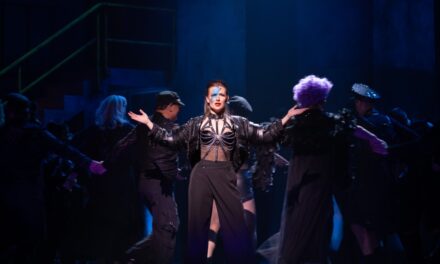“My heart was heavy, both with happiness seeing the animals’ incredible resilience, and with despair as I listened to the horrors they have experienced in their short lives”
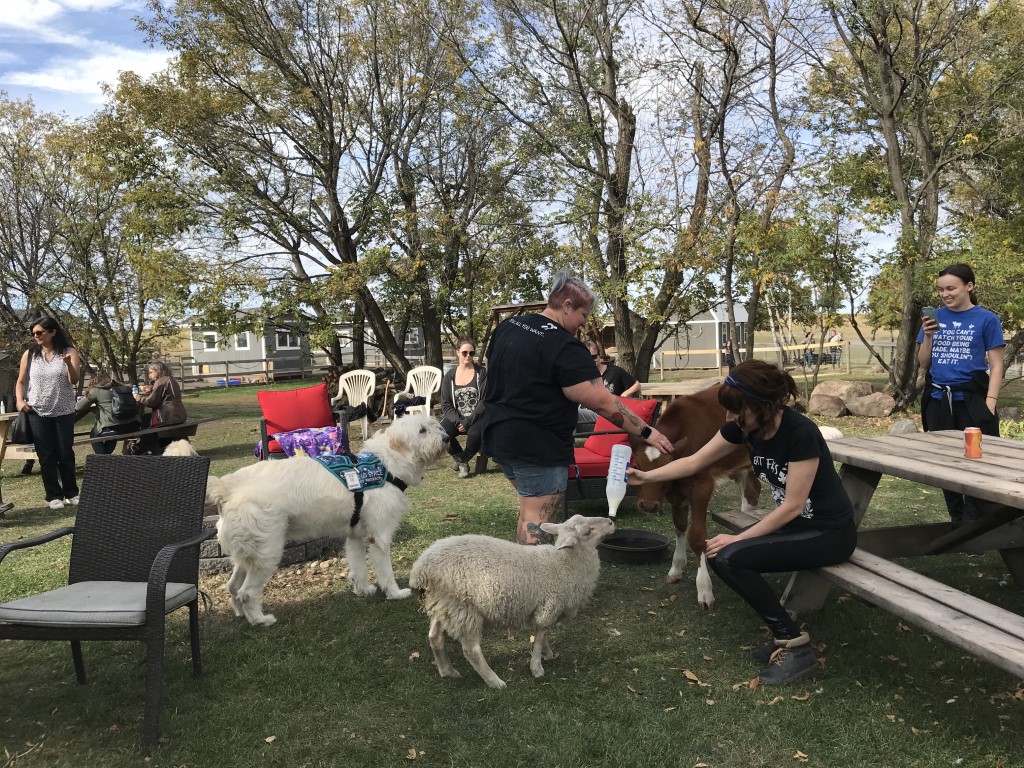
PHOTO BY KIRSTEN DIKA
Review by Kirsten Dika
The FARRM animal sanctuary is a grassroots, non-profit organization that cares for surrendered and abused farm animals. It is not officially open for visits for the 2021 season, but it held a special mini fundraising festival on Saturday Sept 25, 2021 and welcomed a small number of enthusiastic visitors.
Located a few minutes outside of Wetaskiwin at the sanctuary, the festival featured tours of part of the approximately 10-acre property with a vegan by-donation-BBQ afterwards, and activities that included a painting class and yard games.
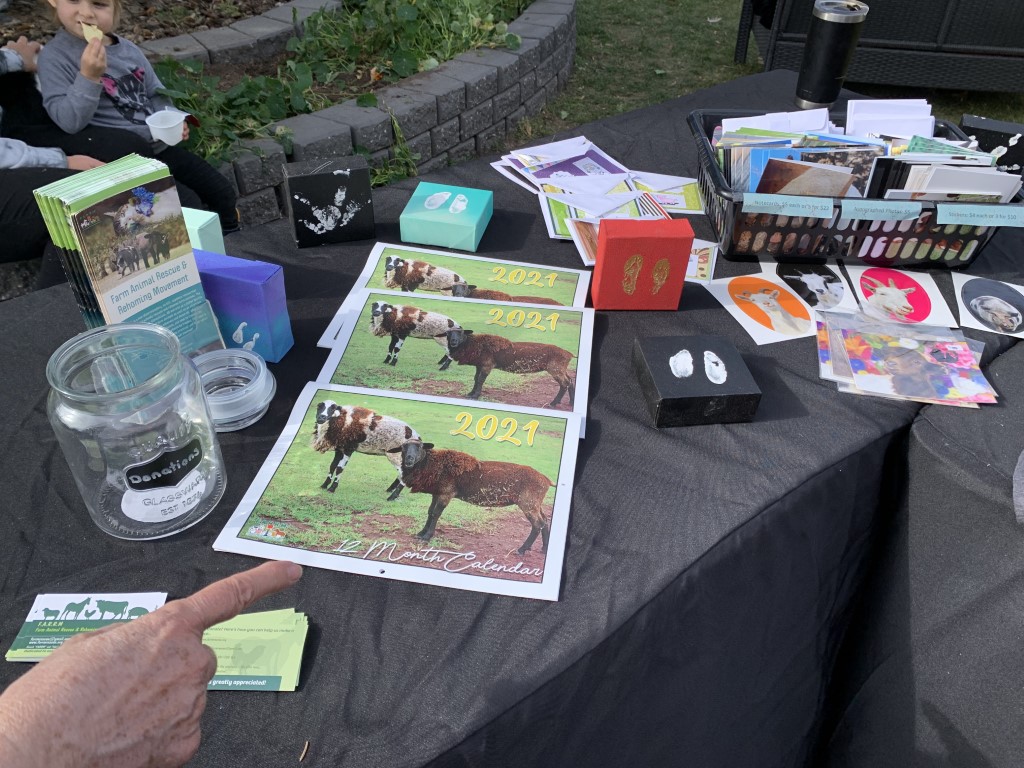
PHOTO BY KIRSTEN DIKA
After digitally signing a waiver form and reading a thorough guide to visiting FARRM delivered via email, I arrived in the early afternoon. I parked at the front of the property, walked up a length of gravel road and was greeted by a busy scene: to the left was the quaint home of the sanctuary owners, and ahead of me approximately 20 animal lovers of all ages gathered in a central courtyard for the 1 pm tour, perusing several booths offering tee shirts, calendars, and art pieces featuring ink prints of various resident animals’ hooves. The scent of sizzling veggie burgers and hot dogs filled the air, and the outdoor painting class was getting underway. The painting being reproduced was a colorful image of a cow’s face.
About a dozen animal residents mingled with the human visitors: two calves, several goats outfitted in wheelchairs for their special needs, a group of waddling ducks, a basset hound and a great dane. I was filled with excitement; I had been curious for several years about FARRM and its legitimacy as an animal sanctuary after attending a fundraising event in Edmonton, and later hearing of a tragic fire at FARRM in 2019 where almost all the animals living there perished.
My guided group tour consisted of visiting several areas of the property where different groups of resident animals live, led by the owner and founder of FARRM, Melissa Foley.
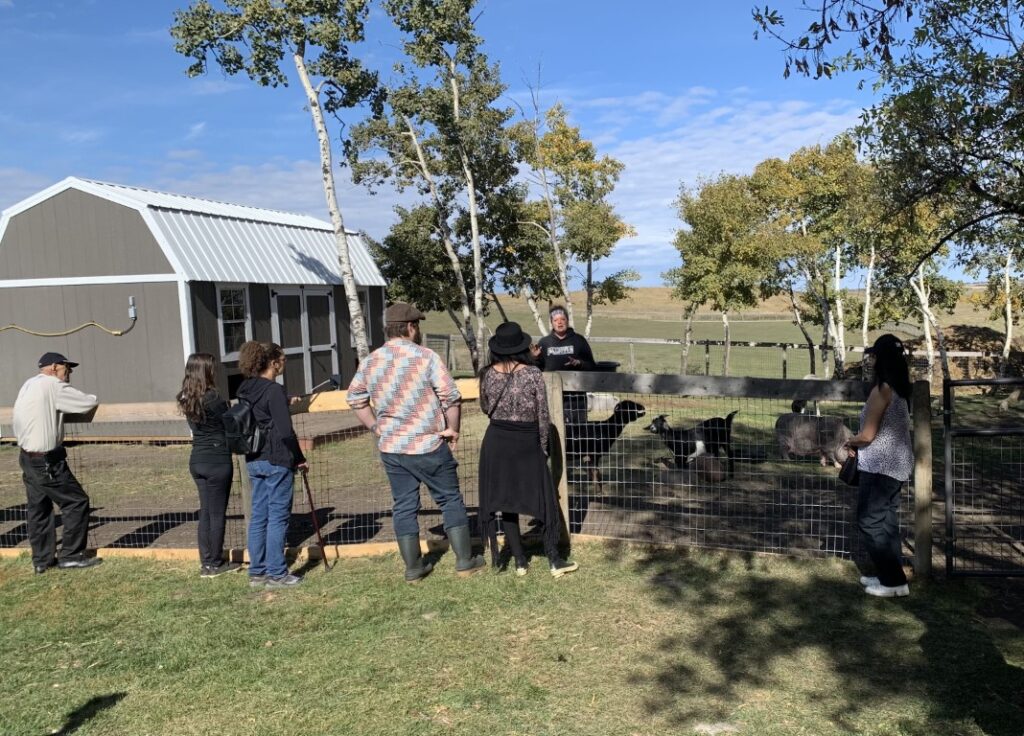
PHOTO BY KIRSTEN DIKA
Through both sad and funny anecdotes, we learned about each resident and the stories of how they came to be at the sanctuary.
Many wonderful animals live at FARRM, including ducks, cats, geese, horses, dogs, donkeys, cows, and a magnificent turkey named Clyde. I will concentrate on my experiences meeting the pig and goat residents.
Our first stop was at the special needs pen, a large, well-maintained area with both open space and trees, and several immaculate looking grey and white barns.
We learned about individuals like Spiderman, a two-year-old black and white goat who is unable to walk normally on his front legs.
Born on a farm in the Northwest Territories with a repairable condition causing hyper-extension of his ligaments, Spiderman remained untreated until the condition permanently disabled his front legs, causing them to remain bent at the knee.
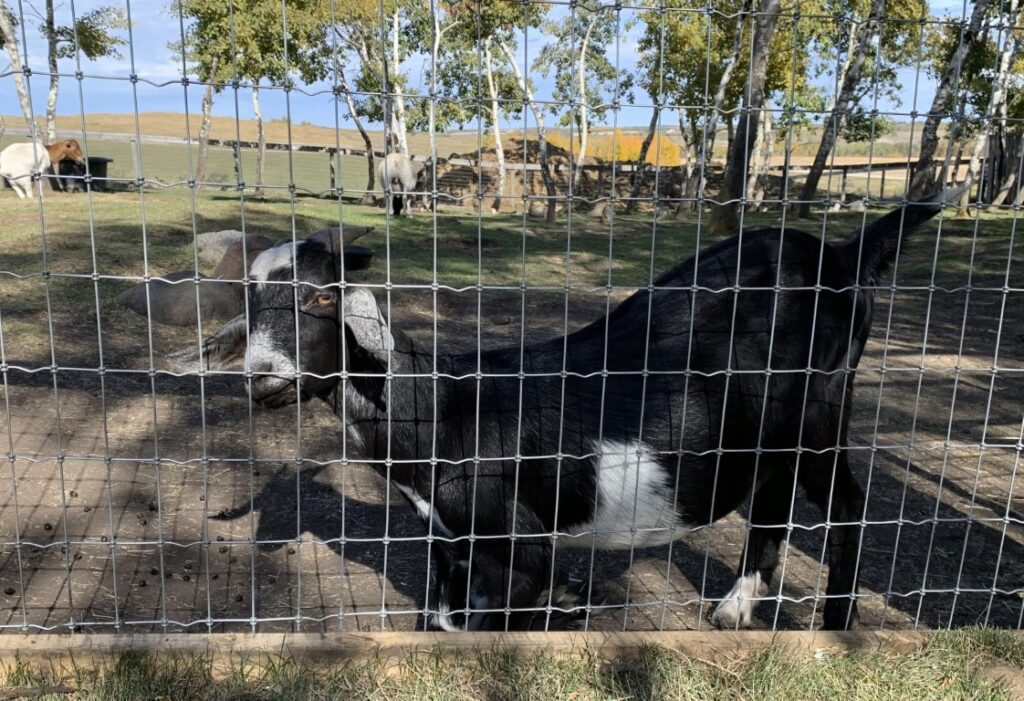
PHOTO BY KIRSTEN DIKA
He was saved by FARRM in August 2020 when the farmers where he lived were planning to cull him. After rehabilitation at FARRM, Spiderman developed tissue like that found in hooves at his knees, allowing him to walk on his knees quite successfully.
In fact, he earned the name Spiderman after arriving at FARRM because of his impressive climbing antics! My heart was heavy, both with happiness seeing the animals’ incredible resilience, and with despair as I listened to the horrors they have experienced in their short lives. Their stories were truly gut wrenching.
Moving on from the special needs enclosure, we visited an enormous central pen where a large group of goats, sheep and two large pigs freely roamed.
Additional beautiful, new-looking barns sat along the edges of the space, and towards the centre were enriching structures for climbing. Comfortable spots for napping were plentiful.
Filling one of them was Nakasha, a gigantic pink pig with a muddy snout, belly, and legs. She sniffed my hand curiously and allowed me to give her a few pats before she stood up and waddled off to find a snack. Nakasha was rescued from a community near Edmonton after the man caring for her and other animals passed away and the man’s spouse failed to provide care for any of the animals. They were left without food, water or shelter, and by the time they were rescued, only Nakasha and one other animal were left alive.
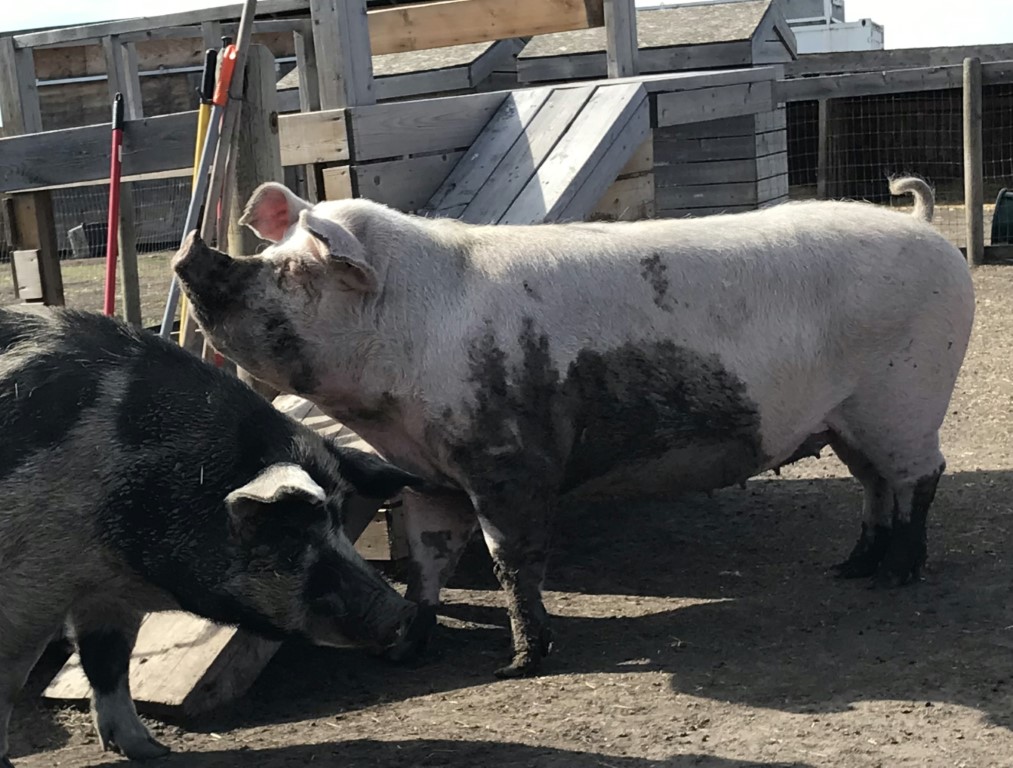
PHOTO BY SHERIDAN PETTY
Nakasha and other pigs like her are bred to grow as fast as possible, and it is likely she will never stop growing. Melissa explained how this is an example of how cruelty is bred into farm animals: pigs are selectively bred to grow to huge sizes and are killed at 6 months of age. They are robbed of their natural life expectancy of 10-15 years, and rescued pigs like Nakasha struggle with profound health problems due to their gigantic size and rapid growth, many dying of heart attacks and other complications. Nakasha is a miracle at 7 years old, Melissa explained. She has been a resident at FARRM since 2016.
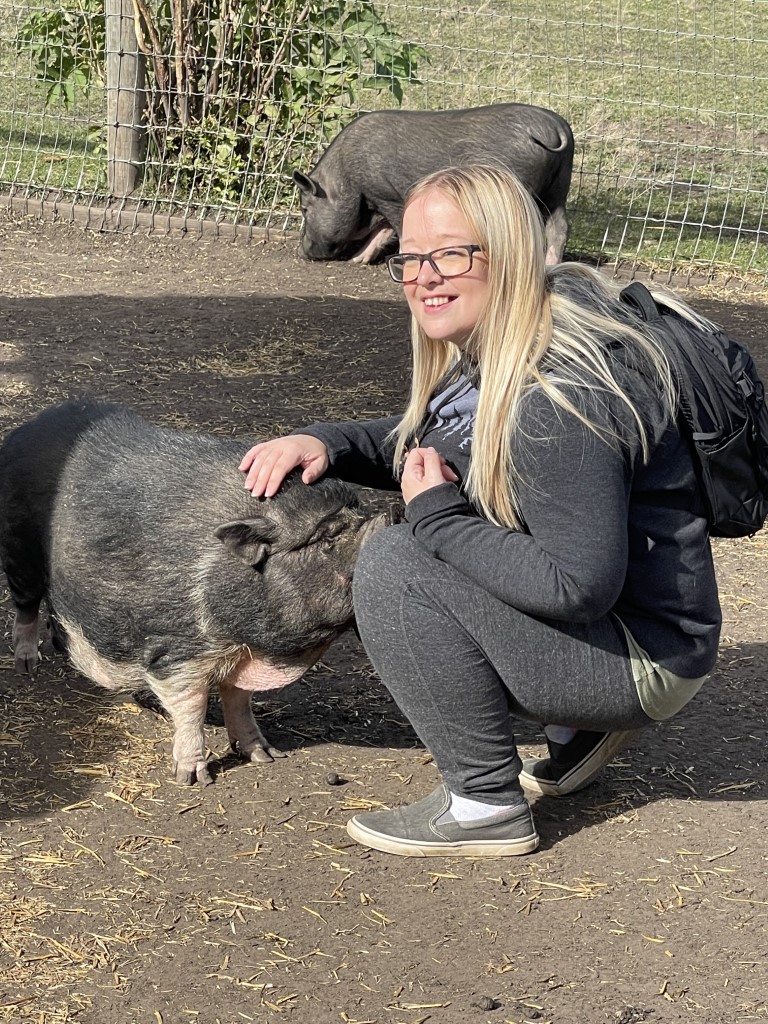
The pigs at FARRM touched me especially deeply. I have always felt a kinship with pigs; I was born in the Chinese Year of the Pig and have adored them since childhood. In the “micro” potbelly pigs’ area at the FARRM sanctuary, I was surrounded by many unique pig individuals, and learned how common it is that micro potbellies are sought out as pets and then surrendered or abandoned.
The fad of “pigs as pets” ends in sad fates for many. Almost every potbellied pig at FARRM was surrendered due to aggressive behaviour issues. Melissa explained that pigs deprived of living with other pigs try to find a dominance structure within human families, often becoming protective of the human responsible for feeding them and aggressive towards other family members.
They also suffer when deprived of a proper environment in which to live and carry out their natural foraging behaviour – they snuffle and dig in the grass and dirt of the ground, obtaining important minerals vital to good health. Here, living in an environment that supports their needs and instincts, the pigs coexist mostly peacefully in a natural hierarchy.
An especially sweet pig, Rosie, was rescued from a neglectful situation in which she was treated as a living garbage can and fed large amounts of inappropriate food. When she arrived at FARRM she was so overweight that her stomach dragged on the ground and was covered in sores, and the fat around her eyes obstructed her vision. Now, Rosie has lost weight and enjoys her days surrounded by her pig brethren in their beautiful space at FARRM. Hanging out with Rosie in the pig pen, scratching her belly and marveling over the coarseness of her hair, was the highlight of my visit.
I came away from my experience visiting the FARRM sanctuary with sore cheeks from smiling and feeling a sense of renewed faith in other human beings – as a vegan and animal rights advocate, one of my favorite ways to spend my time is being surrounded by others who deeply care about animals, and by animals themselves.
The love and care provided to the animals that live at FARRM is immediately obvious. The cleanliness, health of the animals and discernibly close bonds between staff and volunteers and the animals was wonderful and indicative of a real and true sanctuary for the individuals that reside there.
When offering their infrequent tours, FARRM staff are incredibly aware and respectful of each individual animal resident’s quirks, personality, and needs. Many animals do not enjoy human interaction, and no animal is used as a prop or as an attraction. Two resident geese, Olek and Ola, much prefer to scream at human visitors than have anyone enter their space. The FARRM animals are truly living their best lives!
More information about FARRM is available on their website at https://www.farrmrescue.org, as well as on their Facebook page. You can get to know the resident animals through their biographies on the website, and all are available to sponsor, which is an important source of reliable income for FARRM. I highly recommend adding FARRM to your list of reputable organizations to support and rally around, and I hope to see you at their next event!
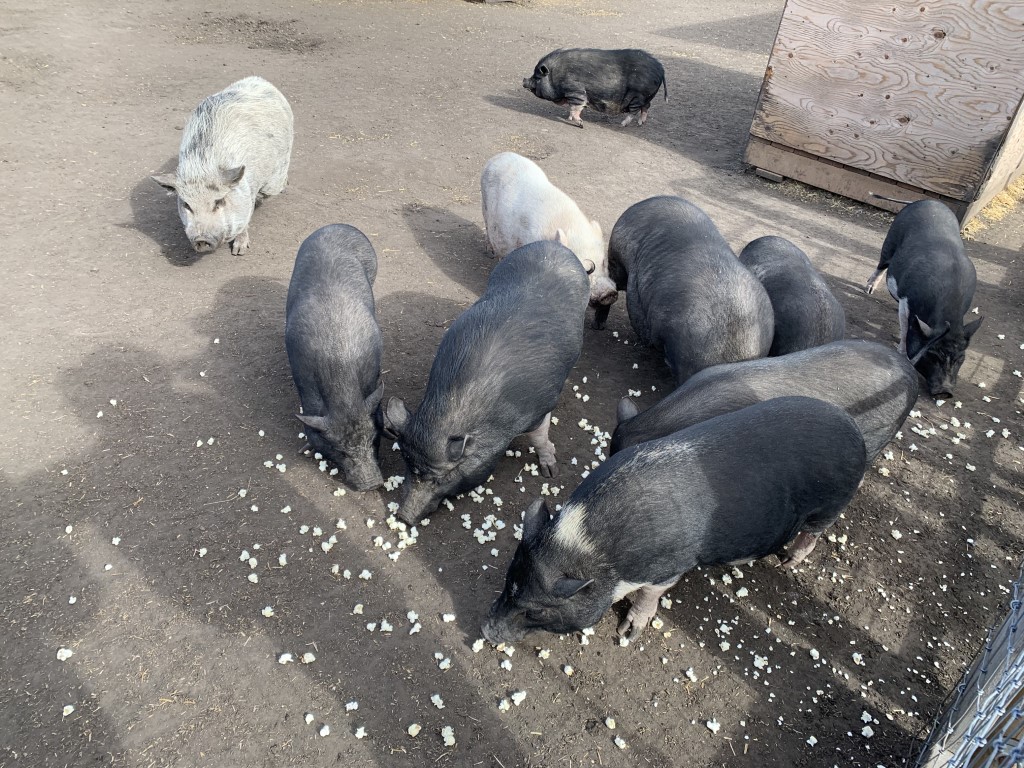
PHOTO BY SHERIDAN PETTY
Farm Animal Rescue and Rehoming Movement (FARRM) animal sanctuary near Wetaskiwin, Alberta.
More info: https://www.farrmrescue.org/


